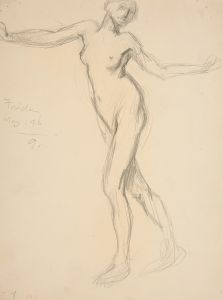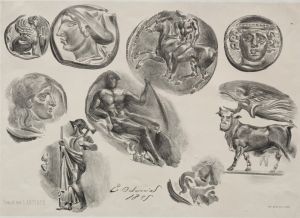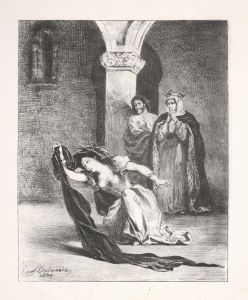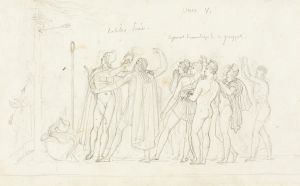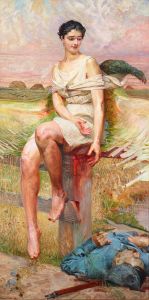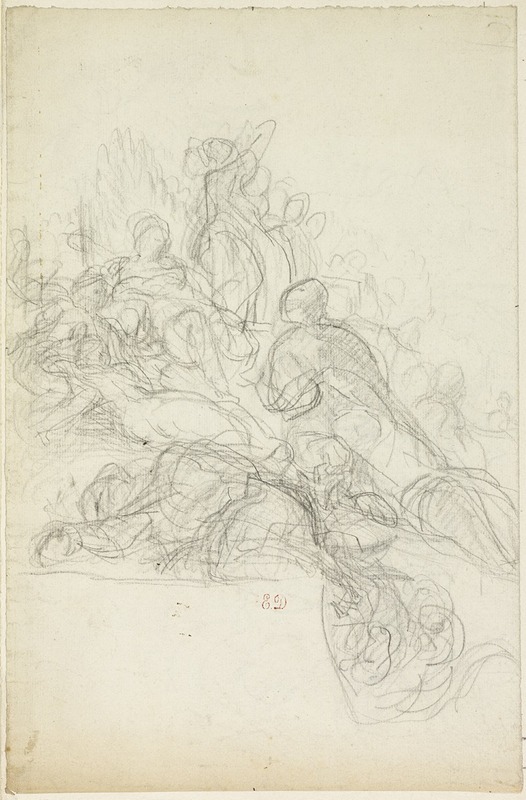
Allegorical or Mythological Scene
A hand-painted replica of Eugène Delacroix’s masterpiece Allegorical or Mythological Scene, meticulously crafted by professional artists to capture the true essence of the original. Each piece is created with museum-quality canvas and rare mineral pigments, carefully painted by experienced artists with delicate brushstrokes and rich, layered colors to perfectly recreate the texture of the original artwork. Unlike machine-printed reproductions, this hand-painted version brings the painting to life, infused with the artist’s emotions and skill in every stroke. Whether for personal collection or home decoration, it instantly elevates the artistic atmosphere of any space.
Eugène Delacroix, a leading figure of the French Romantic movement, is renowned for his vibrant use of color and expressive brushwork. His works often depict dramatic and emotive scenes, drawing inspiration from literature, history, and mythology. One of his lesser-known works, "Allegorical or Mythological Scene," exemplifies his fascination with these themes. Although specific details about this painting are scarce, it reflects Delacroix's broader artistic interests and style.
Delacroix was born on April 26, 1798, in Charenton-Saint-Maurice, France. He studied at the Lycée Louis-le-Grand and later at the École des Beaux-Arts in Paris, where he was influenced by the works of earlier masters such as Peter Paul Rubens and Michelangelo. Delacroix's early exposure to the works of these artists, combined with his own innovative spirit, led him to develop a unique style characterized by dynamic compositions and a bold palette.
Throughout his career, Delacroix was deeply influenced by literature and mythology, often drawing upon these sources for inspiration. His interest in these subjects is evident in many of his works, including "The Death of Sardanapalus" and "Liberty Leading the People." These paintings showcase his ability to convey complex narratives and emotions through his art.
In "Allegorical or Mythological Scene," Delacroix likely explores themes common in his oeuvre, such as heroism, passion, and the human condition. While specific details about the painting's composition and subject matter are not well-documented, it can be assumed that Delacroix employed his characteristic use of color and movement to bring the scene to life. His ability to capture the essence of a story or myth through his dynamic brushwork and vivid color schemes is a hallmark of his style.
Delacroix's work was not only a reflection of his personal interests but also a response to the cultural and political climate of his time. The Romantic movement, which emerged in the late 18th and early 19th centuries, emphasized emotion, individualism, and the sublime. Delacroix's paintings often embody these ideals, challenging the neoclassical conventions that preceded him.
Despite the lack of specific information about "Allegorical or Mythological Scene," it is clear that the painting fits within the broader context of Delacroix's artistic legacy. His works continue to be celebrated for their emotional depth and technical mastery, influencing generations of artists who followed.
Eugène Delacroix passed away on August 13, 1863, in Paris, leaving behind a rich legacy that continues to captivate audiences worldwide. His contributions to the Romantic movement and his innovative approach to painting have cemented his place as one of the most important artists of the 19th century. While "Allegorical or Mythological Scene" may not be as widely recognized as some of his other works, it remains an integral part of understanding Delacroix's artistic journey and the themes that defined his career.






